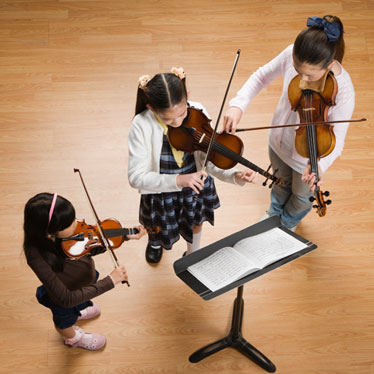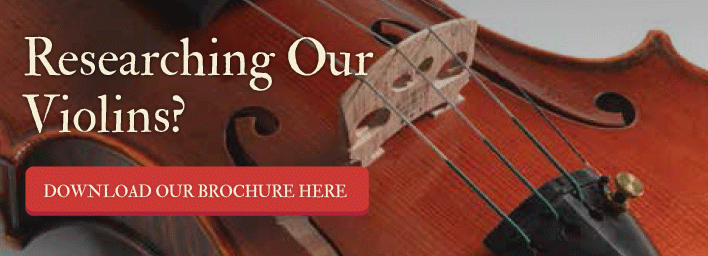How To Pick The Right Size Violin For Your Child

Violin lessons are a big investment. Not only are you paying for the instruction time, but you will also be spending money on various instruments as your child progresses. Nevertheless, all of your well-meaning investments will mean nothing if your child starts off with the wrong size violin. Violin sizing is very important because it dictates how easily your child can navigate and manipulate the instrument. Here's what you need to know:
About Violin Sizes
Before you can begin shopping for the correct size violin for your child, you must first understand how violin sizing works. To begin with, there is the full-scale violin which is typically denoted as 4/4 scale. Each size smaller is given as a fraction of the full-size. For instance, a 7/8 scale violin is a tiny bit smaller than a full size and is perfect for most teens and some small adults. The fractions get smaller and smaller, working their way down to 1/16th scale violins. These violins are extremely small and may look like toys, but they are serious instruments built for early learners between the ages of 3-5 years old. In many countries around the world, musical education starts during the pre-school years and parents invest heavily in quality instruments even at this age.
In the US, most students begin playing violin in late elementary or early middle school years. The most common starting sizes for students in this age range is 1/2 or 3/4 scale.
How to Know if You Have the Right Fit
To begin with, many instructors will give you a rough idea of what size violin your child needs using the "yardstick method." This involves using a yardstick to measure from under the chin where you would normally rest the chin guard of the violin out to the palm of the hand. Using a chart, the instructor can tell you which size instrument to purchase according to the length of your child's arm span.
However, before you purchase the first 1/2 scale violin you see on the advice of the yardstick, it is best to have your child hold the instrument and inspect their posture. For instance, your child should be able to hold the instrument comfortably under the chin without it dipping or feeling too heavy. Also, he/she should be able to grasp the end of the scroll and wrap their fingers around the top so that the middle finger reaches right between the tuning pegs. This position should be comfortable without forcing the elbow to be stretched too far or causing the arm to be bent too much. When your child extends their arm all the way out, the scroll should end right at the wrist.
In addition, the body of the violin should not be too wide or narrow for the shoulders. This will be obvious if it is difficult for your child to control without it dropping. Your child should also be able to comfortably reach all of the strings on the instrument without bending the wrist too far.
With these quick tests, you should be able to see whether or not a violin is a correct fit for your son or daughter. The most important thing to remember is that the fractional number is not the only thing that matters. Even if the yardstick tells you which scale to look at first, you should make sure your child picks-up and tries out multiple instruments to find the one that is most comfortable and sounds the best to their ear. You can learn more about the differences between beginner and intermediate violins in this blog.


